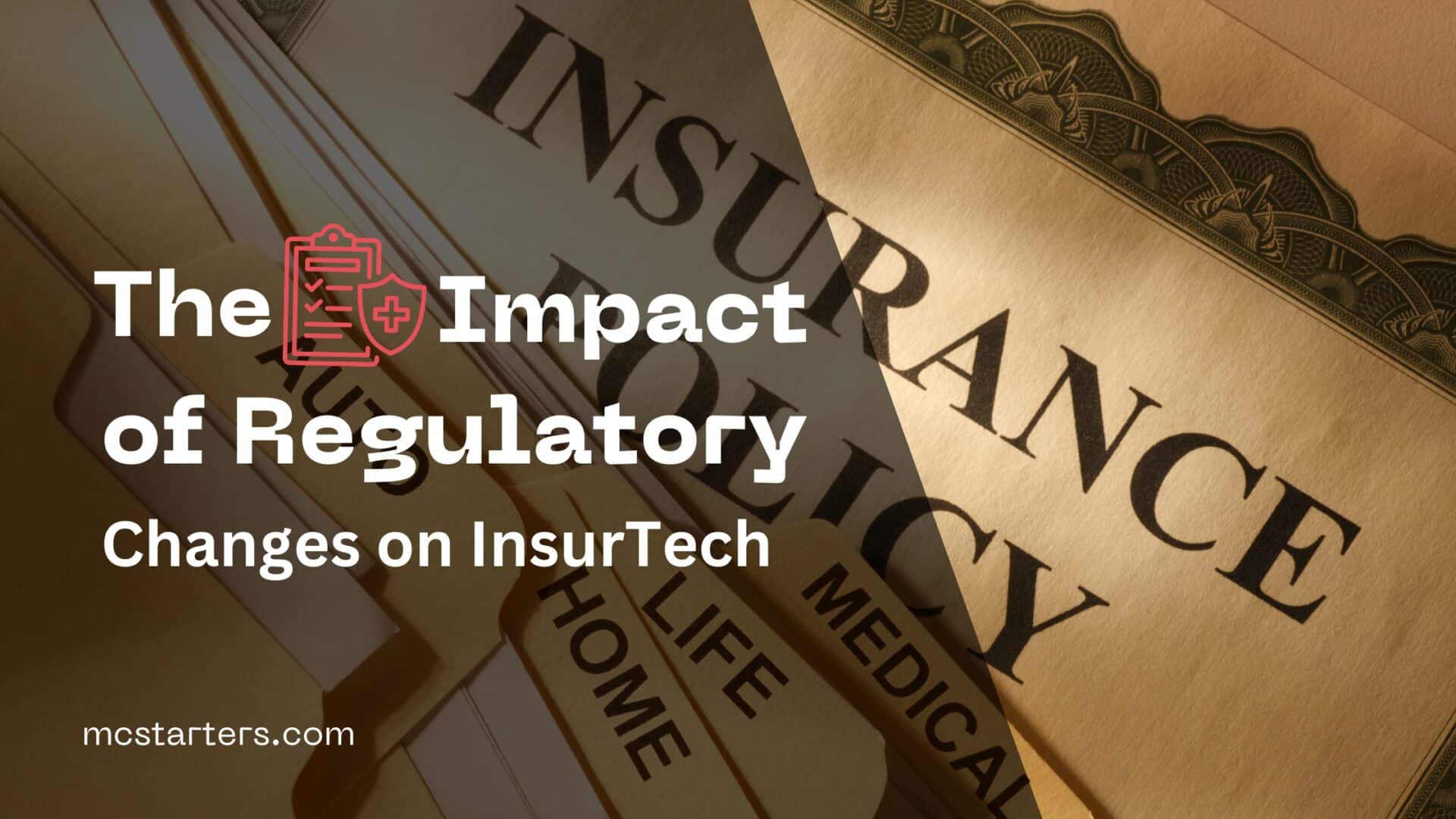Elevate Your Insurance Business: 11 Data-Driven Strategies You Must Try

Breaking into the insurance industry is no small feat, especially for beginners. The sector is rife with competition, evolving customer demand, and a dizzying array of products and services. How can one navigate this intricate landscape to not just survive but truly excel?
The secret weapon for success lies in making data your best friend. When you lean on data-driven strategies, you’re essentially trading guesswork for informed decisions. But where do you start? What data-driven approaches should you prioritize to generate tangible impact?
Must try this: Top 7 Best Insurance WordPress themes
In this in-depth guide, we’ve curated 11 must-try data-driven strategies specifically tailored for beginners in the insurance field. We’re about to explore proven methods that leverage data to improve customer engagement, increase sales, and sustain growth in your insurance business. If you’re keen to unlock the key to business elevation, read on!
1. Understanding Your Customer Base: The Cornerstone of Your Business
Understanding your customer base isn’t just a cursory step; it’s the cornerstone of your insurance business. This process involves diving deep into analytics and customer surveys to create specific profiles or ‘personas’ that represent segments of your target audience. Armed with this information, you can customize your marketing messages for better effectiveness.
Action Steps for a Deeper Customer Understanding:
- Conduct Comprehensive Customer Surveys: This is your direct line to understanding customer needs and expectations.
- Leverage Data Analytics Tools: Use tools like Google Analytics to collect and interpret data about customer behavior.
- Develop Detailed Customer Personas: Merge qualitative and quantitative data to create well-rounded customer profiles.
2. Optimize Customer Onboarding: The First Impression Counts
Your customer experience in the initial stages can create or break their long-term relationship with your business. By leveraging data analytics, you can simplify and expedite the onboarding process, making it as seamless as possible.
Action Steps to Optimize Onboarding:
- Streamline the Signup Process: Eliminate unnecessary steps to reduce friction.
- Automate Information Gathering: Use smart forms that auto-populate fields, making it easier for new customers.
- Provide a Well-Crafted Welcome Package: Email them the necessary information, links, and next steps as part of onboarding.
3. Leverage Social Media: Not Just Presence, but Effective Engagement
Social media isn’t just about maintaining an online presence; it’s about effectively engaging with your audience. Using data analytics, you can determine when your target audience is most active and what type of content captures their attention.
Action Steps for Effective Social Media Engagement:
- Choose the Right Platforms: Not all social media channels will yield the same results. Use data to select the platforms most frequented by your target audience.
- Develop a Robust Content Calendar: Use data-driven insights to time your posts for maximum reach.
- Deploy Social Listening Tools: Monitor mentions, keywords, and conversations relevant to your business to stay ahead.
4. Email Marketing Done Right: The Powerhouse of Personalization
Email marketing is far from obsolete; it’s a powerhouse for personalized marketing when done right. With segmented lists and tailored messaging, your emails won’t just get opened; they’ll spur action.
Action Steps for Effective Email Marketing:
- Compile a High-Quality Email List: Use sign-up forms, giveaways, and other strategies to build a targeted list.
- Segment Your Audience: Use metrics like past purchases, interaction history, and geographical location to segment your list.
- Personalize, Personalize, Personalize: From the subject line to the body, make every word count by making it relevant to the recipient.
5. Measure, Analyze, and Improve: The Continuous Cycle of Growth
The journey doesn’t end once you implement a strategy; it’s a cycle of measuring, analyzing, and making data-driven improvements. This approach ensures your insurance business remains agile and responsive to changing trends and customer demands.
Action Steps for Continuous Improvement:
- Set Concrete KPIs: Identify what success looks like for you in metrics.
- Utilize a Variety of Analytics Tools: Don’t limit yourself to just one platform. Use a mix of analytics tools for a fuller picture.
- Implement Changes Based on Data: Make iterative adjustments to your strategies based on the insights you gather.
6. Harness Content Marketing: The Magnet for Organic Traffic
Content is king, but it’s not just about churning out articles. The right kind of content can serve as a magnet for organic traffic, drawing in prospective customers who are looking for information, solutions, or education.
Action Steps to Magnify Your Content Impact:
- Craft a Comprehensive Content Strategy: Know what you aim to achieve with your content—whether it’s brand awareness, lead generation, or customer retention.
- Create Multi-Format Content: From blog posts and eBooks to videos and podcasts, diversify your content types.
- Incorporate SEO Best Practices: Use relevant keywords, meta descriptions, and quality backlinks to make your content discoverable.
7. Implement Chatbots: The Ultimate Guide to 24/7 Customer Service
Chatbots aren’t just a tech trend; they’re revolutionizing the way insurance businesses operate by providing consistent 24/7 customer service. In an industry that relies heavily on customer relations, the potential of chatbots is too huge to ignore.
Action Steps to Leverage Chatbots:
- Identify Customer Service Pain Points: Use data analytics to find out where your customer service can improve and implement chatbots there.
- Customize Your Chatbot: Ensure your chatbot aligns with your brand voice and offers functionalities relevant to your business.
- Measure Chatbot Efficiency: Regularly track how well your chatbot is performing in terms of customer engagement and query resolution.
8. SEO for Insurance Business: The Lifeline for Online Visibility
Search Engine Optimization (SEO) is essential for any business aiming for long-term success. In the insurance industry, where competition is fierce, effective SEO can make or break your online visibility.
Action Steps to Optimize SEO:
- Keyword Research: Identify high-performing keywords in your industry and integrate them naturally into your content.
- On-Page SEO: Optimize meta titles, and descriptions, and use well-structured URLs.
- Off-Page SEO: Build quality backlinks, and engage in social sharing to improve your site’s authority.
9. Localize Your Approach: The Art of Hyper-Local Marketing
Your local community is often your most immediate market. Data-driven localization techniques can help you adapt your strategies to meet the needs and tastes of local customers.
Action Steps for Effective Localization:
- Google My Business: Create or claim your Google My Business listing to appear in local searches.
- Local SEO: Optimize your website for local search terms and create local content.
- Engage with the Community: Sponsor local events or create location-specific offers to engage your local community.
10. Use Retargeting Strategies: Bringing Potential Customers Back
Retargeting is a powerful tool for re-engaging potential customers who have interacted with your brand but have not yet converted. By using data-driven retargeting strategies, you can increase the likelihood of turning these interactions into conversions.
Action Steps for Retargeting:
- Identify Abandoned Interactions: Track users who left items in their cart, viewed a product, or filled out a form but didn’t complete the purchase.
- Implement Retargeting Ads: Use platforms like Google Ads and Facebook to show targeted ads to these users.
- Measure the ROI: Track how many of these re-targeted interactions lead to a conversion and adjust your strategies accordingly.
11. Optimize for Mobile: The New-Age Necessity in the Digital World
In today’s mobile-first world, optimizing for mobile is not optional. With most users accessing information via smartphones, you need to ensure your insurance business is ready to serve them wherever they are.
Action Steps for Mobile Optimization:
- Responsive Design: Ensure your website is optimized for various screen sizes.
- Mobile App: Consider developing a user-friendly mobile app that provides a seamless experience for users.
- AMP: Use Accelerated Mobile Pages to make your web pages load faster on mobile devices.
Conclusions
We’ve covered 11 comprehensive strategies, each offering a unique dimension to improve your insurance business. From understanding your customer base to optimizing for mobile, these strategies are not just theoretical concepts but practical roadmaps for success. Remember, the key to elevation in this industry is constant learning, analysis, and adaptation. Don’t hesitate to revisit these strategies, measure their effectiveness, and fine-tune them as needed.
If you’re serious about elevating your insurance business, now is the time to start implementing these strategies. Take small, measured steps, analyze the results, and iterate. Your path to becoming a leader in the insurance business sector is laden with data; all you need to do is harness it wisely.
If you liked this post please comment here: Do you have any questions about implementing these strategies?
If you enjoyed this post, please subscribe to our YouTube channel. You may also find us on Twitter, Pinterest, Instagram, and Facebook.
How can I promote my insurance company?
Consider a mix of online advertising, social media, and targeted email campaigns.
How do you convince customers to buy insurance?
Focus on understanding their specific needs and offer tailored, valuable solutions.
How to succeed in the insurance business?
Build strong relationships with clients and adapt to market trends and customer behavior.
How do I market my life insurance?
Leverage educational content marketing, testimonials, and personalized digital advertising.
How to do marketing for insurance?
Use a combination of online and offline strategies, including SEO, social media, and community engagement.
How can I increase my life insurance sales?
Optimize your sales funnel and practice relationship-based selling focusing on client needs.
What is an insurance marketing system?
It’s a structured approach involving digital tools and analytics to promote and sell insurance products.
What is the relationship between marketing and insurance?
Effective communication of an insurance company’s value proposition is crucial to attract and retain customers.




